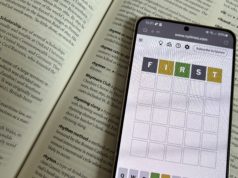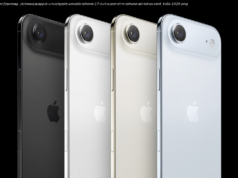An in-depth review of HTC’s new U11 flagship phone for 2017. Take a look at its ever changing colour and find out why you can squeeze it.
By
Chris Martin | 16 mins ago
See full specs
Price comparison from, and manufacturers
HTC’s new flagship phone for 2017 is a mix of well-known One range and the newer U series devices. But can this recipe keep up with the likes of the Samsung Galaxy S8 and LG G6? Here’s our in-depth review of the squeezable HTC U11. See also: Best phones for 2017.
The name might seem confusing but HTC is continuing the numerical series it started with the HTC One M7 and tagging it onto the end of the more recently U range of glass phones. The main selling point of the HTC U11 is that you can squeeze the sides to perform various tasks.
We’ve compared the HTC U11 and LG G6 in depth separately.
Coming in with a similar price to the Galaxy S8, the HTC U11 will be priced at £649 which is about average for a 2017 flagship. The price in the US is the same figure at $649.
The new phone became available in the UK starting on the first week of June.
Additionally, HTC has begun selling a 128GB model of the HTC U11, with 6GB RAM and two SIM slots. It is available to pre-order now and will begin shipping in September. It is priced at £699/$699. You can buy it now here.
As teased by HTC ahead of the launch, the key design element and unique selling point is that the phone is squeezable. The firm calls this feature ‘Edge Sense’ and it’s achieved by pressure senors on either side of the phone.
It’s somewhat comparable to iPhone’s 3D Touch and the hidden pressure sensitive home button on the Samsung Galaxy S8. Read: Galaxy S8 vs HTC U11.
They sit on the bottom half and mean you can do various things by squeezing it rather than using buttons or the display. What’s clever is that you can adjust how much force is required and also toggle visual, haptic and audio feedback.
At launch you’ll be able to do quite a few things like use it as a shutter button, launch voice dictation, screenshot, toggle the flash light, launch digital assistants or apps. An Edge Sense Add-On will allow you to customise the sensors within any app so you could squeeze to zoom in Google Maps but sadly the app, even in beta form, won’t launch with the phone.
Although there’s lots you can do with the Edge Sense, you can only pick two via short or long squeezes. Because the sensors only require pressure to work, you can use Edge Sense with gloves and it should also work with most cases, according to HTC.
This isn’t just an attention seeking gimmick but while it’s useful at times, it doesn’t feel particularly nice or comfortable to use. We’ve also found the visual feedback appearing while trying to use apps like Twitter even though we were applying no pressure at all.
Post-launch in September 2017, HTC rolled out beta features to the Edge Sense app for U11 users. It allows you to go into specific apps and assign short and long squeezes to certain actions. It comes with a short squeeze for Google Maps to zoom, which works well, and you can set a long squeeze to zoom out, for example.
You can get pretty granular and results are mixed; we set play and pause on YouTube videos but it was in portrait. Turn the phone sideways, and the app only remembers where on the screen you tapped to emulate with a squeeze, so isn’t intelligent enough to replicate an action in this way.
Still, it shows HTC trying to bring what was seem as slightly gimmicky into the long term use of the phone.
Although HTC is merging its older One (we’re including the HTC 10) and newer U ranges together for this flagship, the U11 is much closer to the latter in terms of design.
Instead of the previously familiar metal uni-body, the phone is mostly made from glass. The ‘3D liquid surface’ design essentially means that the glass is moulded with nice curves with the aim of mimicking the surface tension of water.
The U11 has this on the back and front and while it feels nice ergonomically it comes with issues.
Like some rivals, the glass rear cover means the phone is slippery and dropping it will almost certainly result in a shattering of your nightmares – it’s the kind of phone that comes out of your pocket when sitting down. Glass also shows up fingerprints and other marks so you will feel the need to clean it a lot.
Some colours hide the grubby marks better but they all suffer from this issue to some extent. The good news is that there are some new options – Amazing Silver and Solar Red – the latter providing everything from red through to gold. The bad news is that the Solar Red won’t be available at launch.
The fascinating way the phone changes colour in a pearlescent way is achieved by something called ‘Optical Spectrum Hybrid Deposition’ where plenty of heat and pressure mean the colours bond to the glass in layers.
In terms of size the HTC U11 sits between the existing U Play and U Ultra but is closer to the larger model. There are two important design elements to make you aware of, though.
The first is the exciting news that HTC has finally caught up and gone waterproof so the U11 comes with an IP67 rating. You can fully dunk the phone in up to 1m of fresh water for up to half an hour so the toilet, bath and sink are no longer dangers. See also: Best waterproof phones.
The second is that like the U Ultra, there’s no headphone jack which will be disappointing for some users. However, not only does HTC include an adapter in the box which will work with almost any USB-C phone, it has an amplifier in it.
While that’s nice, the issue here is that you can’t charge the phone and have headphones connected at the same time or use headphones if you forget to take the adapter with you. It’s a shame considering there’s space for one.
With the hardware on phones hitting something of a peak a long time ago, it’s no wonder all the brands are now differentiating predominantly with design. Although it might not be as interesting as the squezzable design, the specs on offer with the HTC U11 are pretty top notch.
Things start off with a 5.5in screen, which makes the HTC U11 the firm’s biggest flagship phone yet. HTC sticks to the Quad HD (1440 x 2560) resolution and LCD5 technology found on the HTC 10 – it’s much more standard compared to the more whacky displays on the LG G6 and Galaxy S8.
The size increase means a drop to 534ppi compared to its predecessor but that’s hardly an issue. The colours might not be as punchy as AMOLED rivals but you’re unlikely to be disappointed with the screen which is certainly flagship level.
Gorilla Glass 5 is used here like the U Ultra but there’s no talk of a Sapphire crystal edition.
HTC predominantly uses Qualcomm processors in its phones and that’s no different here. It’s good to see the latest Snapdragon 835 chipset or ‘mobile platform’ as Qualcomm now calls it.
The octa-core (4x 2.45GHz & 4x 1.9GHz) processor is worthy of any 2017 flagship and performance is as you’d expect. As you can see from the benchmark results it competes well with rivals. We’ve only had it freeze up once and it seems to be a one-off.
The 835 is paired with 4GB of RAM and there’s a decent 64GB of internal storage. That’s seemingly the standard for a flagship phone this year and although there’s a model with 6GB of RAM and 128GB of storage, we’re told it’s unlikely to reach the UK.
Luckily, HTC continues to offer expandable storage via a microSD card slot to that alleviates the issue somewhat. Power users will still be yearning for that higher spec model, though. See also: OnePlus 5 vs HTC U11.
Not much has changed in terms of connectivity on the HTC U11 when compared to the HTC 10.
The phone has the range of hardware you’d expect such as dual-band 11ac Wi-Fi, Bluetooth 4.2, GPS, NFC, Cat16 4G LTE.
The only physical port is USB-C and once again there’s a front-mounted fingerprint scanner which is a little small but very fast and accurate.
HTC has always aimed to offer a premium audio experience with its phones and the HTC U11 is no different.
Like previous devices, the U11 supports Hi-Res 24bit/192kHz playback but there’s more. Once again the USonic headphones can, via sonar, personalise the audio output based on the shape of your ear canal but this time the included headphones feature active noise cancelling.
These are powered by USB-C and the only way of connecting them as there’s no headphone jack.






